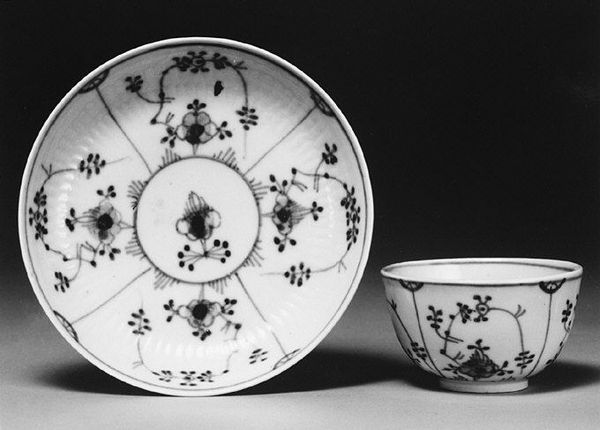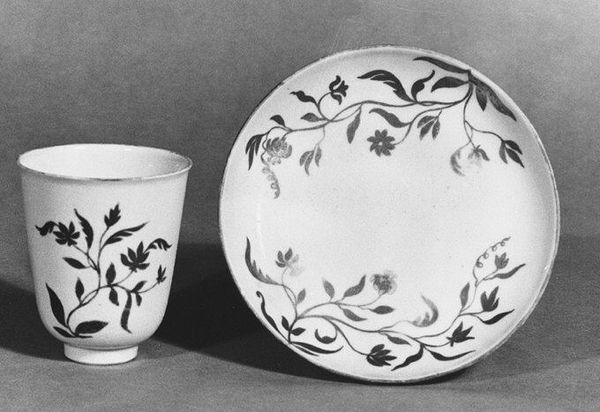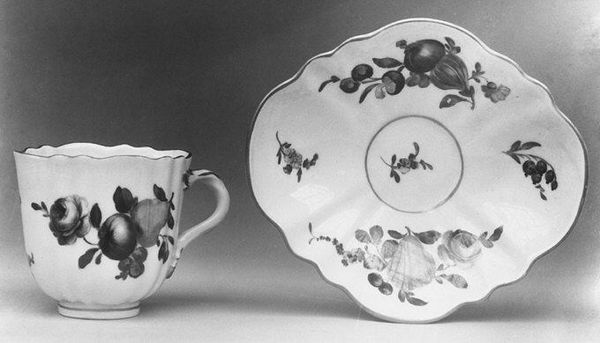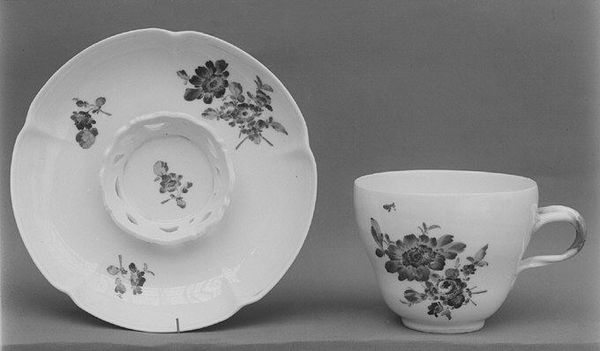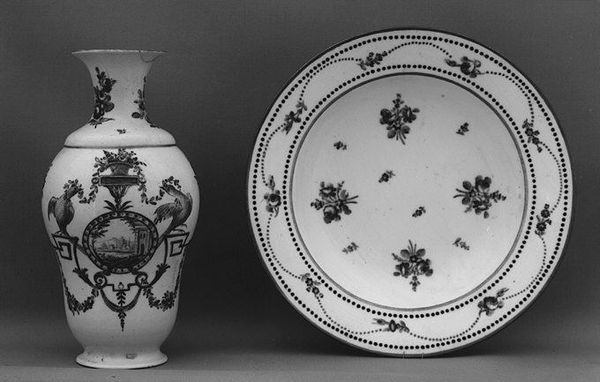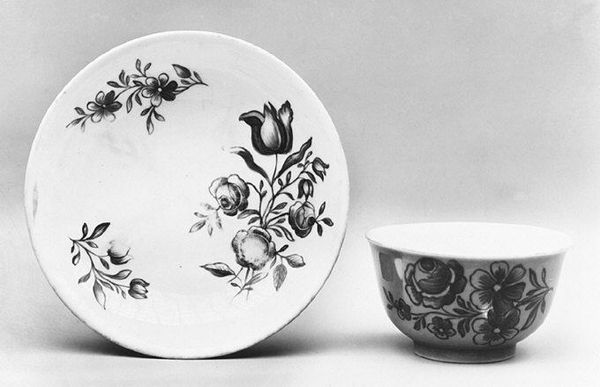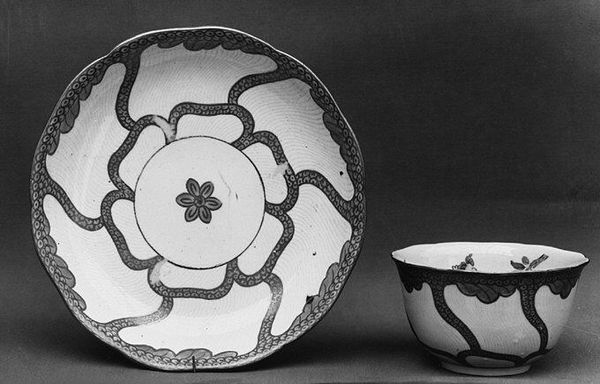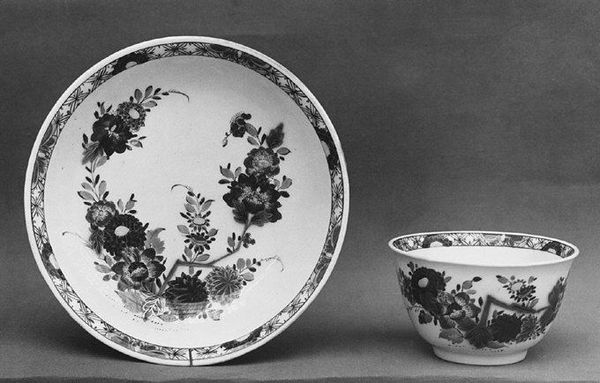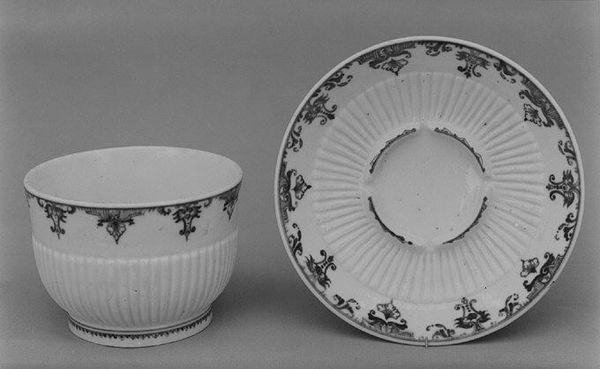
ceramic, porcelain, sculpture
#
asian-art
#
ceramic
#
porcelain
#
sculpture
#
decorative-art
Dimensions: Height (teabowl [.60]): 2 1/16 in. (5.2 cm); Diameter (saucer [.61]): 5 1/8 in. (13 cm)
Copyright: Public Domain
Editor: Here we have a charming teabowl and saucer from between 1750 and 1760. The decorative art piece is crafted from porcelain, and both pieces echo similar patterns. I'm intrigued by the combination of rigid geometric shapes and flowing floral motifs. What structural aspects jump out to you? Curator: Indeed, the dialectic between geometric form and organic decoration forms the crux of this ceramic work. Observe how the rigid radial symmetry, especially prominent in the saucer, interacts with the delicate floral and avian patterns. This visual tension serves as a structuring principle. Notice, too, how the dark panels alternate with lighter, more detailed sections. What effect does this alternation produce? Editor: I think it creates a visual rhythm. The dark panels act like pauses, giving the eye a moment to rest before being drawn back into the intricate details. Curator: Precisely. This carefully constructed rhythm is further emphasized by the consistent use of the floral emblem. It recurs as a motif, providing a visual anchor amidst the varying decorative patterns. Consider its placement: centralized on both pieces, and repeated within the radial design. It provides balance within the alternating pattern sections and binds the separate elements. Editor: It’s interesting to focus on that central motif. It does bring cohesion and symmetry to the overall composition, which would otherwise risk appearing scattered or disjointed. I hadn't thought about that initial point before now. Thank you! Curator: Indeed. Formalist analysis allows us a framework to understand these design principles as intrinsic to the ceramic, and the maker's deliberate construction of balance and tension. The details all serve that goal.
Comments
No comments
Be the first to comment and join the conversation on the ultimate creative platform.

